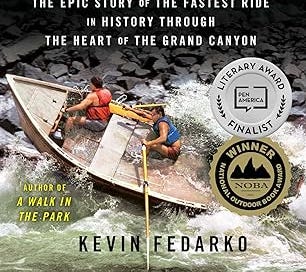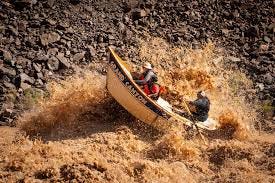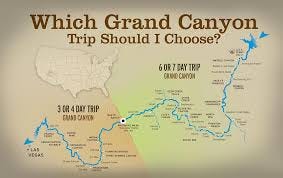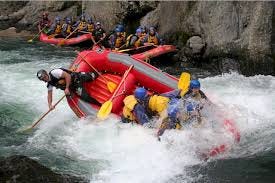Thrill Ride: Raging Rapids in the Grand Canyon
So many sides of the Grand Canyon you never knew about
THE EMERALD MILE. The Epic Story of the Fastest Ride in History through the Heart of the Grand Canyon. By Kevin Fedarko.
Superficially, The Emerald Mile is about three men in a tiny wooden dory on the Colorado River in 1983. A calamity of nature has created the West's greatest snowmelt ever. In violation of laws and simple common sense, the three nuts attempt to ride the rapids of the Grand Canyon on the subsequent ungodly flood of water released by Glen Canyon Dam. But that description merely scratches the surface of this book.
In 1983 the perfect climatology of La Nina and the atmospheric ‘Pineapple Effect’ created perhaps the wettest winter on record in the west, dumping over twenty feet of snow all the way back into the Rockies. The ‘villain’ in this story is the heavy snowpack and the unprecedented sudden melt in May that followed, which led to an uncontrollable (and near disastrous) rise in water levels behind western dams. Three river men took advantage of the massive discharge from Glen Canyon Dam and attempted the fastest ever speed run through the Grand Canyon, an illegal but once in a lifetime opportunity. Emerald Mile describes their attempt, but that’s only about 15% of this book. In my reading, the other 85% is even more fascinating.
I have to say, I love the Grand Canyon. Living in Arizona, I’ve always marveled that perhaps the greatest wonder of the natural world is less than four hours away. It's really not hard to get to, it's jaw-dropping no matter how many times you see it, yet I feel it's relatively less visited than say Disney World or Universal Studios. We try to go once or twice a year. (Our favorite is the North Rim, which takes longer to get to, but up there you truly feel you have the whole Canyon to yourself.) I've been lucky enough to hike rim to rim twice, and stay at Phantom Ranch. If you ever wanna feel that mother nature is all powerful and that you’re a mere speck of it, and that you're not really in control of your life after all, stand on the lip of the Grand Canyon and stare. If you’re like me, you'll feel pretty small, and even temporary.
In any case, while here in Arizona I might have a personal attachment to the Canyon, you don't need that connection to enjoy this book. Emerald Mile brilliantly brings together many facets of the River and Canyon, their history and ‘development’. It begins with a brief history of when the Spaniard explorer Cardenas became the first non-Native American to see the Colorado River and the Canyon in 1540. We get a great overview of John Wesley Powell's 1869 Geographic Expedition in 1869, when he became the first person to run the river. His crew hauled up heavy wooden boats and shoved off into the unknown. (He started in northern Utah, and his adventures are legendary. After many months, and near the end miles downriver later, Powell was deserted by two of his mates, who never made it out of the Canyon alive.
The unexpected highlight of this book was the mesmerizing section about the dawn of hydroelectric power in the West. Fedarko describes the engineering and construction of Glen Canyon Dam, which bottled up the Colorado and now holds back the enormous Lake Powell, which provides electric power and water (and recreation!) to much of the West. The magnificent engineering behind dam construction and the inner workings of a huge dam like Glen Canyon is utterly fascinating. A stunning technological achievement is an understatement.
It's shocking to learn that in the 1950s and 60s, the Bureau of Reclamation wanted to build two more dams, as large as Glen Canyon, actually within Grand Canyon National Park itself. Congress had passed the bill to do this! But the Sierra Club – then in its infancy and just a fledgling organization — put a stop to it and literally prevented Grand Canyon National Park from becoming one big lake. If nothing else, we have them for preserving the Grand Canyon for what it is today.
There’re a few chapters on the start of the river running industry and the development of a shapely and strong wooden dory. One dory in particular, named the Emerald Mile, was built in the early 60s and painted green. It was a favorite of a certain purist group of river runners. That boat had nine lives and survived more flips, crunches and rebuilding, living a fascinating lifetime of adventure. The boatmen describe the pros and cons of wood vs inflatables, dory vs rubber, small boats vs big rigs, oars vs motor power.
Fedarko ties in a bit of geology. In the 250-mile long Canyon, it’s not uncommon for a few cubic acres of red rock to shear off in the winter, sending multi-millions of tons crashing down in a geologic avalanche. Some of these rock-falls don’t stop until they reach the river, altering currents, forming eddies, blocking the channel, and creating new rapids. Some rocks, of course, are larger than busses, bringing new challenges to the boatman every season.
The characters of the river bring the color. Engineers, pioneers, Rangers, tourists, and of course the boatmen. Many of these men and women live in the back of their trucks and care only for another trip, another chance to face the danger and read the river, cut a new line, patch a boat, sleep under the stars, run the rapids and study the water levels, new rock slides, the currents and waves.
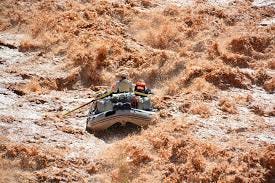
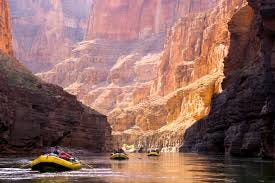
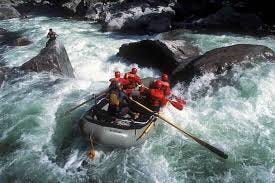
Emerald Mile weaves all these threads together masterfully. Engineering, history, politics, geology, the characters, the water, and finally the tumultuous season of 1983. The great melt caught the Bureau of Reclamation flat-footed and as winter snow melted very suddenly, Lake Powell rose and rose against Glen Canyon Dam, faster than any model had predicted. The rise was, of course, uncontrollable. The lake level, across the incredibly vast expanse of Lake Powell, was rising as much as two feet a day. Engineers had constructed emergency spillways to control the level of the water. These spillways were essentially huge tunnels through the rock on either side of the dam, which took water around the dam and discharged it downriver. They were opened or shut via their enormous hydraulic doors. As lake water continued to rise, the emergency spillways were opened wider and wider. But the power of the water was underestimated within the spillways, and the volume of water rushing through at over 100 miles an hour began to damage the concrete walls of the spillways. Engineers feared erosion would consume the underlying rock, putting the anchors of the dam in jeopardy. Accordingly, as the water continued to rise, the structure of the entire dam itself was in jeopardy. Engineers were at a panic as the water continued to rise until it reached the top of the dam.
Unable to use the relief of the spillways because of the erosion of the underlying rock, engineers came up with a remarkable solution. Plywood! Incredibly, catastrophe was averted by standing sheets of plywood against steel supports, across the entire top of the dam. (So you have a dam that cost $300,000,000 in the ‘60s, but a trillion gallons of Lake Powell is being held back by $10 sheets of plywood.) Even so, when the water level rose four or five feet up against this plywood, and snowmelt continued unabated, there was no choice but to open the spillways to the max and send an unprecedented massive flood of water down the Colorado.
The never-before-seen volume of water created river waves 20 to 30 feet high, which tossed big power-pontoon boats upside down like paper plates. So dangerous were the rafting conditions with this rage of water, Park Rangers halted all river traffic. Yet three river-rats, (who were denied permits to run) decided to tempt fate and try to set the speed record from one end of the Canyon to the other. They’d attempt this in an old wooden dory called the Emerald Mile, using only oars, nonstop by days and through the night at the deadly height of the greatest water release in the history of the Colorado. Across impassable rapids. Do they make it? Does their dory get shattered in the dark against the rocks? Are they saved by helicopter rescue, arrested and tossed in jail for violating park policy and putting Rangers and rescuers at risk?
Again, this book is so so much more then about a record attempt down a raging river. You read Emerald Mile because on one level, it’s a first-class thriller on whether these maniacs make it or not. But beneath that, So many threads are brought together. You read Emerald Mile to learn about the engineering, the geology, the history, the boatman and all the information about a river. You read it because it's about conservation and how various parties go head-to-head, and ultimately come together for a common goal. You read it to learn how the West is served by hydroelectrics, how brilliant engineers rectified the disaster of crumbling spillways beneath the dam, brought on by an atmospheric calamity. Here's Emerald Mile on Amazon. This is an epic read that's incredibly informative. It’s a stay-up-all-night page-turner. And ultimately, it's a great book for anybody who wants to learn more about one of America's great natural wonders, and the interplay of its brave men and women.
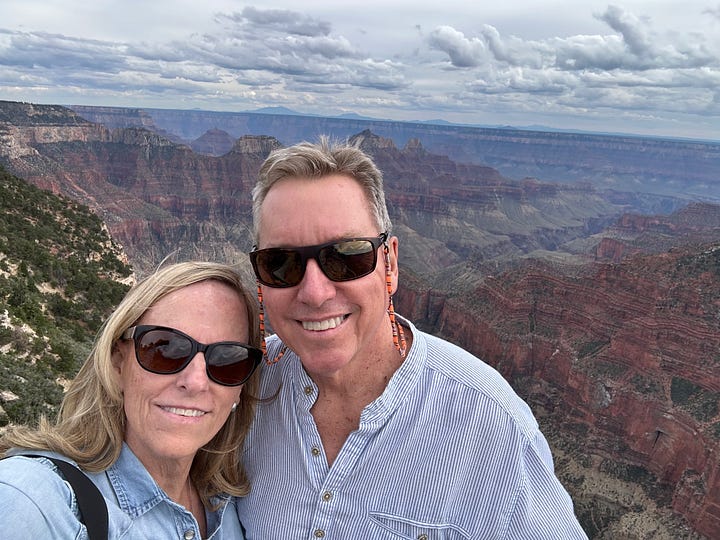
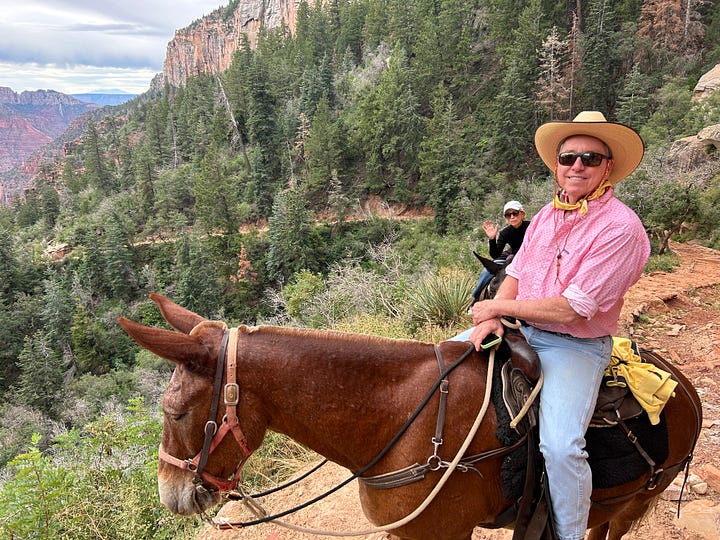
*****
In my last letter on this site, I mentioned that someone pointed out to me that with little promotion or fanfare, my first novel, Chip Rock and the Fat Old Fart, had reached the Top Ten on Amazon's category of ‘Christian Fiction’. I know that many of you-- my Substack followers-- clicked and downloaded Fat Old Fart , which is currently set for Free. I owe you all a debt of gratitude. Fat Old Fart has reached NUMBER ONE!!! in two of Amazon's Kindle categories: Number One in ‘Christian Fiction’, and also Number One in ‘Coming of Age Fiction’. Five years after publication, this book has found its audience, and I humbly thank you all.
Thank you for reading and sharing with your river-running friends!!
MD in AZ.

